A steady increase in the percentage of disabled staff in the civil service doesn’t take away from the discrimination they face, says Gemma Byrne.
Disabled staff are underrepresented in the senior civil service (SCS), face significantly more discrimination, and score lower on all staff engagement measures.
The percentage of civil servants with a disability has increased.
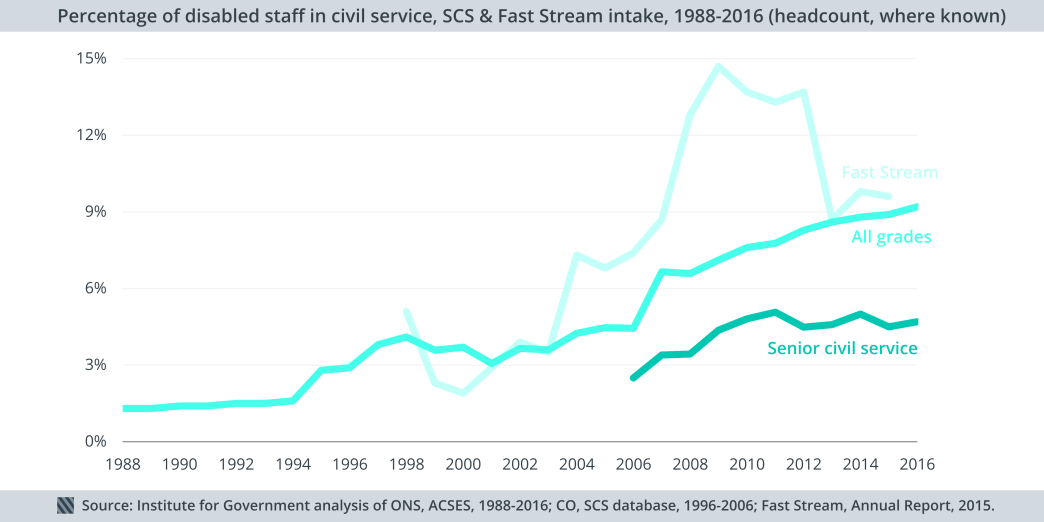
In 2016, 9.2% of civil servants who reported their disability status identified as disabled, up from 7.6% in 2010 and 1.3% in 1988.
Since 2002, the percentage of Fast Streamers identifying as disabled has been higher than that for the civil service as a whole. But unlike for female and ethnic minority candidates, the percentage of disabled Fast Streamers has fallen steeply since 2013.
Disabled civil servants are still reporting far more discrimination.
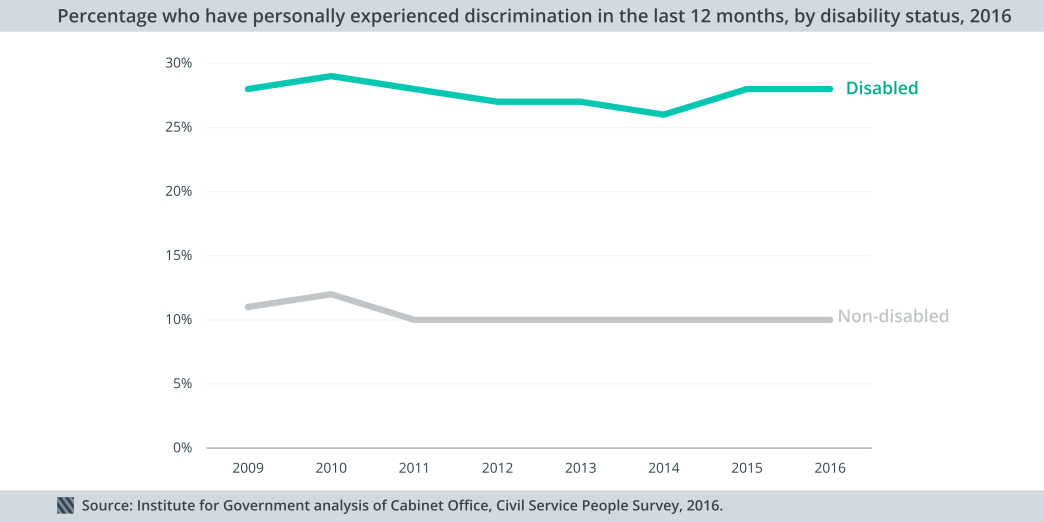
When asked whether they had personally experienced discrimination at work in the last 12 months, 28% of civil servants living with a long-term limiting condition, illness or disability answered ‘yes’. This is significantly higher than the 10% of non-disabled civil servants who had faced discrimination at work, and this disparity in the level of discrimination is the same now as it was in 2009.
The percentage of disabled senior civil servants is half that of the most junior grades
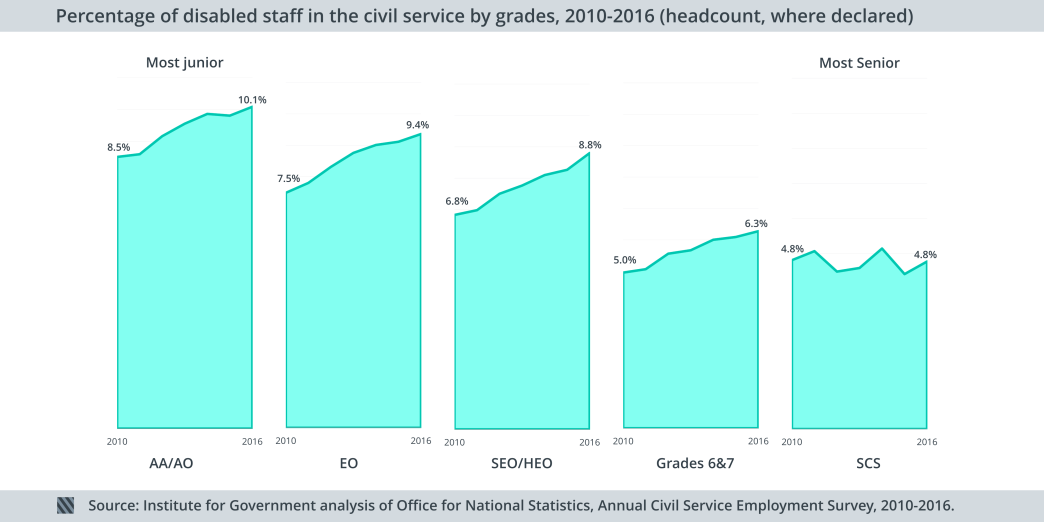
There has been a steady rise over time in the percentage of civil servants living with a disability at the AO/AA, EO, SEO/HEO, and Grade 6&7 levels. But there has been little to no progress at the SCS level: the 4.8% figure for 2016 is the same figure as in 2010.
As is the case with female and BAME (Black, Asian and Minority Ethnic) civil servants (beyond EO), the percentage of civil servants who identify as disabled declines with seniority at each grade.
HMRC has the biggest gap between disabled staff in its civil service and senior civil service.
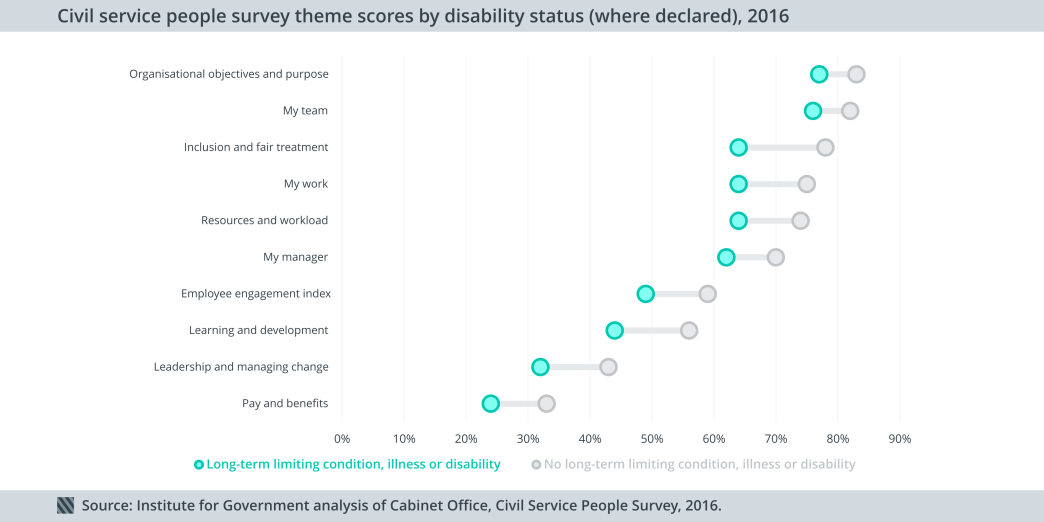
While HMRC has the highest percentage of disabled staff overall (15.3%), it has the second lowest percentage of disabled staff in its senior civil service, with just 3.8% of senior civil servants living with a long-term limiting condition, illness or disability. HMT is the department with the lowest percentage of disabled staff at the whole civil service level (5.6%), but for the SCS the percentage of disabled staff closely matches that for the whole department (5.3%).
For DfID and DCMS the representation of disabled people at the senior civil service level appears to soar above that of the whole department – but the number of senior civil servants in these departments is small, and both the IfG and the Office for National Statistics (ONS) round the data to some extent, which could distort the real picture. With the disability status of 31.2% of civil servants not declared, it is difficult to get a true picture of the representation of disabled people in the civil service.
Civil servants with a limiting long-term condition are much less satisfied with their working conditions.
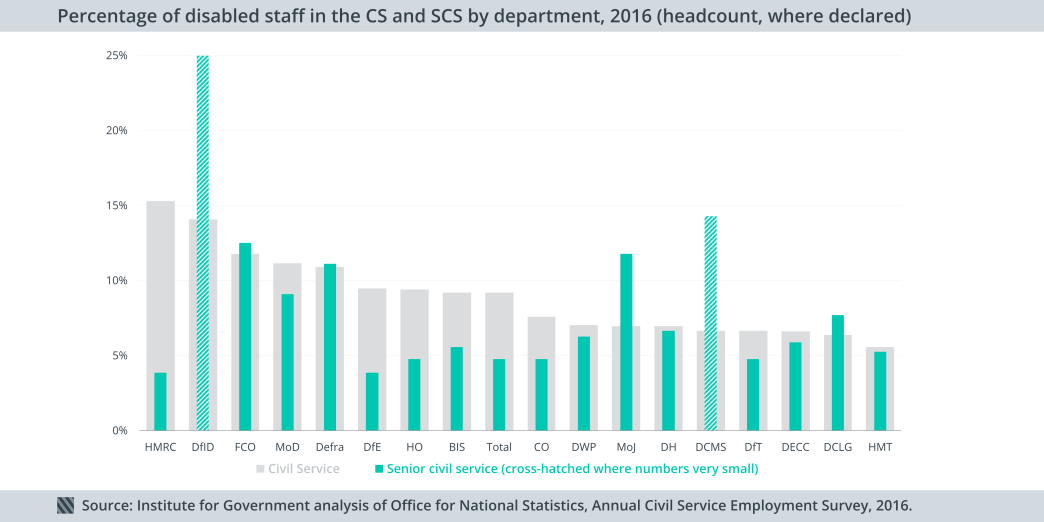
Across all themes in the 2016 Civil Service People Survey, which measures staff engagement, civil servants with a long-term limiting condition, illness or disability score significantly lower than those without one.
Disabled civil servants scored much lower on measures of whether they felt they were treated fairly and included, with a 14% difference between disabled and non-disabled civil servants. There has been little to no change in the size of these gaps in engagement scores since 2010.
As with gender diversity and ethnic diversity, the civil service has introduced initiatives like the Talent Action Plan and a senior disability champion to increase the percentage of people living with a long-term limiting condition, illness or disability in its workforce. But there is still a long way to go before we improve in the representation and experience of disabled civil servants.
- Supporting document
- Whitehall monitor 17.pdf (PDF, 2.17 MB)
- Topic
- Civil service